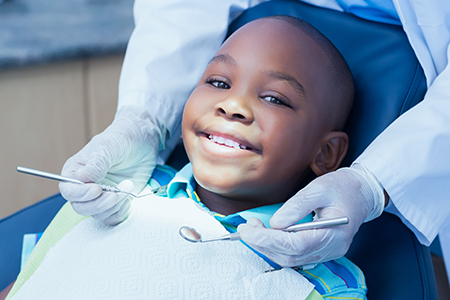Pediatric Dental Emergencies: What Moms And Dads Need to Know for Quick and Effective Treatment
In the realm of pediatric health care, oral emergency situations can occur suddenly, leaving parents unclear of how to take care of the situation properly. Recognizing the signs, sorts of injuries, and instant actions to take can make a considerable difference in the end result for a child's oral health and wellness. With a quick and proper response, moms and dads can alleviate possible long-lasting repercussions and guarantee their child gets the required care without delay. By being prepared and notified, parents can play a crucial role in guarding their youngster's dental health.
Indications of Pediatric Dental Emergencies
When assessing pediatric oral emergencies, it is essential for parents to be watchful for specific indications indicating prospective significant concerns. Among the main indications of a dental emergency situation in children is relentless tooth pain that is not reduced by non-prescription pain medications. This might show an underlying infection or damages that needs immediate interest from a dentist. Swelling in the gum tissues, face, or jaw location is another red flag that should not be overlooked, as maybe an indication of an abscess or other severe oral problem.

Typical Types of Oral Injuries
Common types of oral injuries in kids commonly result from accidents or sports-related tasks that can lead to numerous forms of trauma to the mouth and teeth. One common oral injury is a fractured tooth, which can vary from a small chip to a much more serious break involving the inner layers of the tooth. Children might also experience dental injuries like tooth invasion, where the tooth is pressed into the jawbone, or avulsion, which is the full variation of a tooth from its socket.
Immediate First Aid Measures
Upon coming across a pediatric dental emergency, swift and appropriate first aid steps are essential to reduce pain and protect against more issues. For a knocked-out tooth, instruct the kid to carefully rinse the tooth with water, attempting not to touch the root, and place it back in the outlet if possible. If re-implantation is not possible, store the tooth in a container of milk or the youngster's saliva up until reaching the dentist.
When to Look For Expert Help
Seeking prompt oral care from a pediatric professional is imperative in addressing possible complications arising from pediatric oral emergencies. Moms and dads must seek expert help instantly if their child experiences extreme tooth discomfort, facial swelling, hemorrhaging that doesn't quit, a knocked-out permanent tooth, or any type of trauma have a peek at this website to the mouth or face. These signs show a major oral issue that needs prompt interest from a pediatric dental practitioner.
Furthermore, if a child suffers relentless tooth sensitivity to warm site link or cool, problem chewing or swallowing, or indicators of infection such as pus around the gums, moms and dads need to not delay in seeking professional dental treatment. These signs and symptoms could show underlying dental issues that require to be dealt with without delay to avoid additional difficulties.
In cases of dental emergencies, it is vital for moms and dads to get in touch with a pediatric dental practitioner as quickly as feasible to make certain correct medical diagnosis and therapy - pediatric dentistry oakland. Postponing professional assistance can bring about exacerbated oral concerns and prolonged pain for the kid

Preventing Future Dental Emergency Situations
To reduce the possibility of future dental emergencies, parents must focus on regular dental health practices and routine sees to a pediatric dentist for preventive care. Motivating kids to clean their teeth two times a day with fluoride tooth paste and educating them the proper method for two minutes each time can substantially reduce the danger of dental concerns.
Regular brows through to a pediatric dental expert for examinations and cleanings are crucial for early detection of any kind of prospective dental troubles. These appointments allow the dental practitioner to check the youngster's dental wellness, give expert cleanings to dental directory eliminate plaque and tartar build-up, apply fluoride therapies for added defense, and offer guidance on appropriate dental treatment methods.
Conclusion
In verdict, parents must know the indicators of pediatric dental emergency situations, usual sorts of oral injuries, immediate very first help steps, and when to look for specialist aid. By taking aggressive steps to avoid future dental emergency situations, parents can make sure fast and reliable treatment for their kids. It is necessary to stay notified and prepared in order to handle any type of oral emergency situation that may develop.